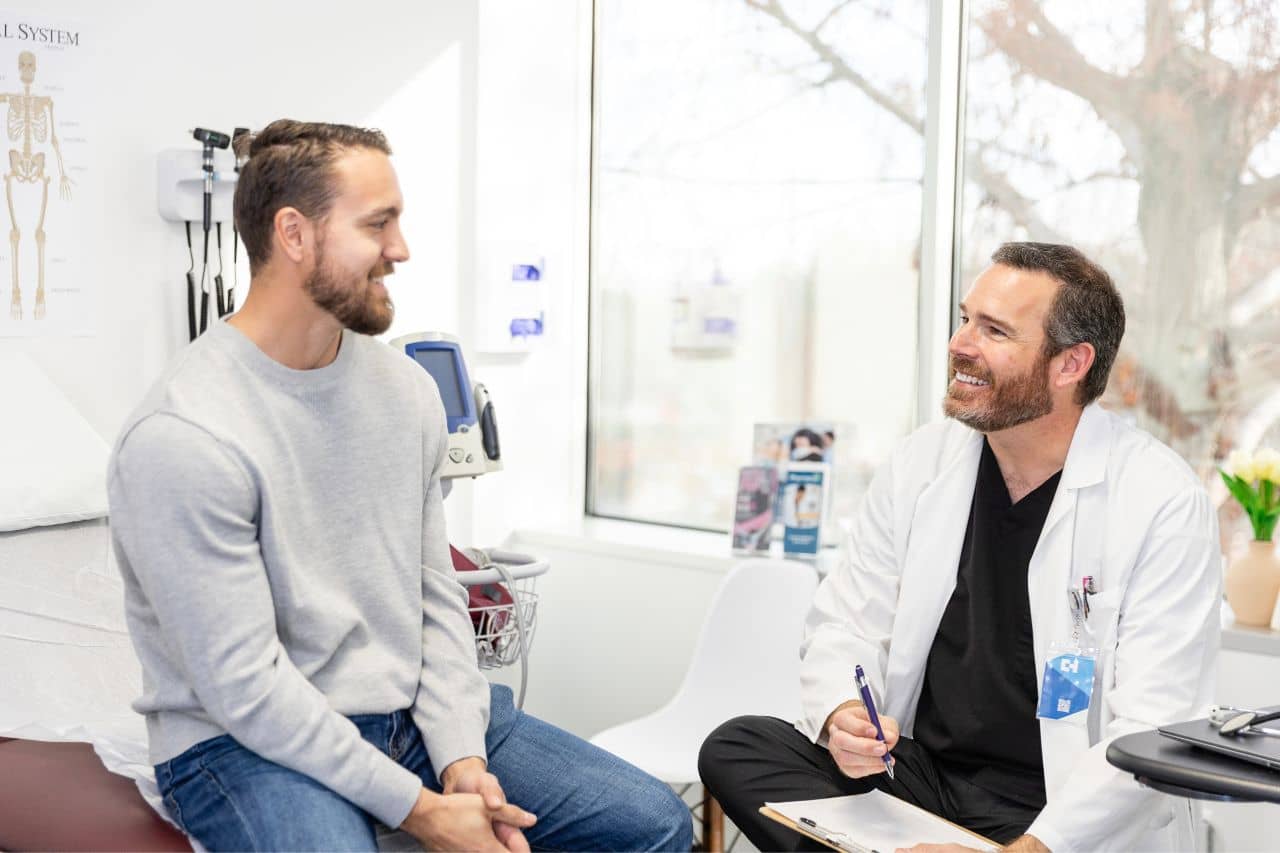What You Need to Know About Skin Cancer on Legs

Skin cancer occurs when skin cells start growing abnormally. Ultraviolet light from the sun is one of the most common causes of that abnormal growth. Most skin cancer is treatable, but minimizing your risk and identifying the condition early if it develops is best.
Skin cancer can occur anywhere, but people tend to notice it more readily on their face, head, and upper body. An often overlooked area is the legs. Skin cancer on the legs, as anywhere, can be dangerous if not caught early.
Understanding Skin Cancer on the Legs
The three most common types of skin cancer are basal cell carcinoma, squamous cell carcinoma, and melanoma. All can develop on the legs.
Each type is a health problem that should be addressed promptly. However, melanoma on the leg can be particularly severe as it has a greater ability to spread to other parts of the body. When examining your legs, if you suspect early-stage skin cancer of any type, it’s crucial to contact your physician.
Identifying Skin Cancer on Your Legs
Doctors developed what is called the “ABCDE” method of self-screening to help people identify melanoma skin cancer. The letters stand for:
- Asymmetric: Melanoma typically has an uneven shape rather than being round, for example.
- Border: Melanoma lesions tend to have edges that are poorly defined or “blurry.”
- Color: Melanoma can have various colors and shades, including black, dark brown, light brown, blue, gray, red, and pink.
- Diameter: Melanoma lesions are typically more than 6 millimeters (or a quarter of an inch) in diameter.
- Evolution: Melanoma spots or bumps tend to evolve over time (weeks, months, or years), changing their size, shape, or color.
You can spot cancerous growths on your legs by performing regular self-exams. In these assessments, you should note anything unusual.
For melanoma, this includes:
- New spots or moles or changes in existing ones (size, shape, color, swelling, etc.)
- Pain, tenderness, or itchiness of skin spots, bumps, or moles
- Sores that don’t heal
- Change in the characteristics of a mole or spot, such as bleeding, oozing, or scaliness
Signs of basal cell carcinoma skin cancer on the legs include:
- Lumps or bumps with shiny surfaces
- Sores that bleed or ooze
- Discolored skin patches with indentations in their centers
- Round growths that have similar coloring to the surrounding skin
- Raised areas that look like scars
Squamous cell carcinoma is characterized by:
- Scaly, rough skin patches
- Firm, red nodules
- Open sores, including those that develop within scars
- Marks that look like age spots
- Growths that look like warts or have a horn-like appearance
These symptoms of skin cancer on the legs are things to look for. If you identify what you think are skin cancer spots on your legs, your doctor will determine if they’re cancerous and, if so, what type of cancer it is.
Risk Factors and Prevention
Anyone can develop skin cancer on their legs. You may be more inclined to be affected by skin cancer if you have any of the following characteristics:
- Fair skin that freckles or burns easily
- Personal or family history of skin cancer
- Excessive exposure to UV light, whether from sunlight, tanning beds or lamps, or other sources
- History of sunburns as a child or teenager particularly sunburns that blistered
- Many moles or moles called dysplastic nevi
- Precancerous lesions called actinic keratoses (rough patches that are brown to dark pink and are most common on the hands, face, and head of fair-skinned people)
- High-altitude environment, particularly in sunny, warm areas
- Weakened immune system
- Radiation exposure
- Exposure to cancer-causing substances, such as arsenic
To reduce your risk of cancer on the legs or elsewhere on your body, do the following:
- Minimize your exposure to intense sunlight by staying indoors, especially from approximately 10 a.m. to 4 p.m. in North America.
- Wear sunscreen with an SPF (sun protection factor) of at least 30 throughout the year, even on cloudy days.
- Reapply sunscreen after swimming, sweating, or other activities that may have removed it.
- Wear protective clothing, including dark, tightly woven items that cover your arms and legs, a hat with a wide brim, and sunglasses to protect your eyes.
- Don’t use tanning beds or lamps.
- Know whether your medications make your skin more sun-sensitive and take extra precautions if needed.
You should also perform regular skin self-exams. In addition, it’s a good idea to have a dermatologist perform a full-body skin cancer check periodically.
How Do Doctors Remove Skin Cancer from Your Legs?
Talk to your primary care provider. They may refer you to see a skin specialist or dermatologist who would conduct a thorough skin examination and see if any further evaluation is needed. Sometimes the exam may be enough, but if there is cause for concern, you may require a biopsy. If a skin cancer is diagnosed, sometimes simple removal is all that is needed. If your situation is more complicated, you may be referred on for further specialized care.
Doctors use several different procedures to address cancer bumps on the legs, malignant melanoma skin cancer spots on the legs, etc.
These procedures include:
- Skin biopsies. Sometimes, the procedure to obtain tissue for testing removes the entire cancerous spot, and no further treatment is required.
- Cryotherapy. Doctors can freeze skin cancer cells, after which they slough off.
- Excisional surgery. Dermatologists sometimes surgically remove cancerous spots and a small amount of surrounding healthy skin to ensure all the cancer cells are gone.
- Mohs surgery. This is another type of surgery doctors use to remove skin cancer. Its goal is to eliminate cancerous tissue, leaving as much healthy tissue in place as possible. This surgery is primarily used for basal cell and squamous cell cancers near areas that are sensitive or where minimal scarring is preferred, including the lips, ears, eyelids, forehead, scalp, fingers, and genitals.
- Curettage and electrodesiccation. In this procedure, a dermatologist scrapes away cancerous cells using an instrument with a sharp, looped edge. Next, they use an electric needle to kill any remaining cancer cells.
- Photodynamic therapy. This treatment involves applying medication to your skin and activating it with a blue or red fluorescent light.
- Radiation therapy. A doctor called a radiation oncologist directs intense beams of energy at cancer cells to stop their growth or kill them.
- Chemotherapy. This treatment uses either topical or infusion medication to kill cancer cells.
- Immunotherapy. This procedure uses medications that train your immune system to find and kill cancer cells.
Learn More About Skin Cancer
If you find skin areas on your legs that concern you — lumps, spots, sores that don’t heal, changes in moles, etc. — talk with your Baptist Health doctor. They can do a physical exam and advise you on treatment or next steps.
To better understand your skin cancer risk, complete your health assessment now.


.jpg?rev=3b9e6c513f4444b09afd107f17666371)
